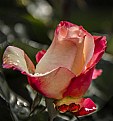|
|
|
John Barclay
{K:3650} 7/29/2003
|
Excellent! Love the choice of B&W for this! As you know I'm a fan of the back of the sunflower! I'll post another tonight!
|
|
|
|
|
Kim Culbert
{K:37070} 3/13/2003
|
Thanks Russ (and everyone else who's commented) It means a lot to me that you've enjoyed this image as much as I.
|
|
|
|
|
Russell Love
{K:7006} 3/13/2003
|
Kim,
Have you ever wondered who those people are that would pick your shot as a favorite? Well acturally I have picked two of yours. This one and the Shrouded in the mist. I love them both. Great Job on both. Keep it up
Later my friend,
Russ
|
|
|
|
|
Becky V
{K:9699} 9/25/2002
|
Thanks so much for the info! I really have to try that! *BWG*
|
|
|
|
|
Russell Love
{K:7006} 9/24/2002
|
Kim,
I love wht the red filter did here. I wish you could post the same shot without so others could see how it makes the difference. Maybe that will be my next project? Great detail and tones. Keep after it!
Later my friend,
Russ
|
|
|
|
|
Kim Culbert
{K:37070} 9/24/2002
|
Thanks for the comments so far! And Becky, thanks for letting me know about the lower left corner... I like it with the shadows, but it would be interesting to hear what others have to say as well.
AS for the red filter... they are used in B&W to make a scene more dramatic by adding contrast, as well as lightning up the greens in the image. I am trying to find a link that I saw once using red flowers and green grass to illustrate this point, so if I find it I'll pass it along.
Here is one quote from Photographytips.com:
"This is the dramatic, high-contrast filter for black and white photography. Red filters lighten red, orange and yellow, and greatly darken blues and greens. Skies and foliage come out incredibly dark. Shadows are deep. Skin tones are blanched, especially those of women. The red filter is also very effective in reducing haze, more so than yellow filters in far-off landscapes, and makes sunsets more brilliant.
If the film is slightly under-exposed when using a red filter to shoot an outdoors scene in broad daylight, the contrast is so great that you can achieve a night-time, moonlit effect, especially when used in combination with a polarizing filter. The red filter is also used for infrared photography with black and white infrared film, and with color film for underwater photography to restore red lightwaves absorbed by water."
|
|
|
|
|
Becky V
{K:9699} 9/24/2002
|
Wow! With this great photo, you push one of the first expectations of a flower (colour -- or at least it is for me) aside in order to focus attention on shape and especially texture. I love the "hairs" on the back - very sharp! How was this lit? On the one hand, I like the shadows on the left, but on the other, it may give the illusion that it's a bit cramped on that side. I'm not sure why I think that. Hmmm . . . .
May I ask a silly newbie question? Why a red filter?
|
|
|
|
 Sue O'S
{K:12878} 9/24/2002
Sue O'S
{K:12878} 9/24/2002
|
woo! Marvelous, Kim!
|
|
|
|
|
Sarah Needham
{K:2482} 9/24/2002
|
Kim, I really like this. There's nothing I would change!!
Sarah
|
|
















